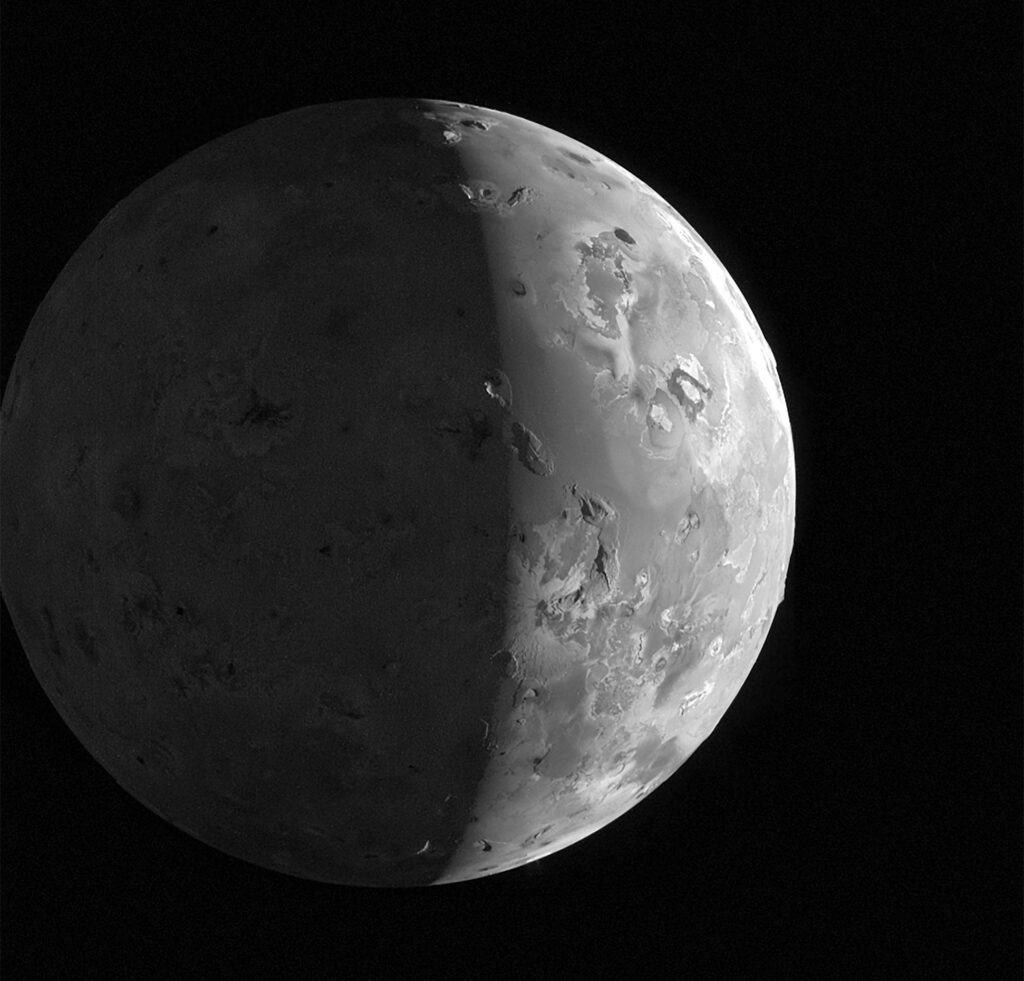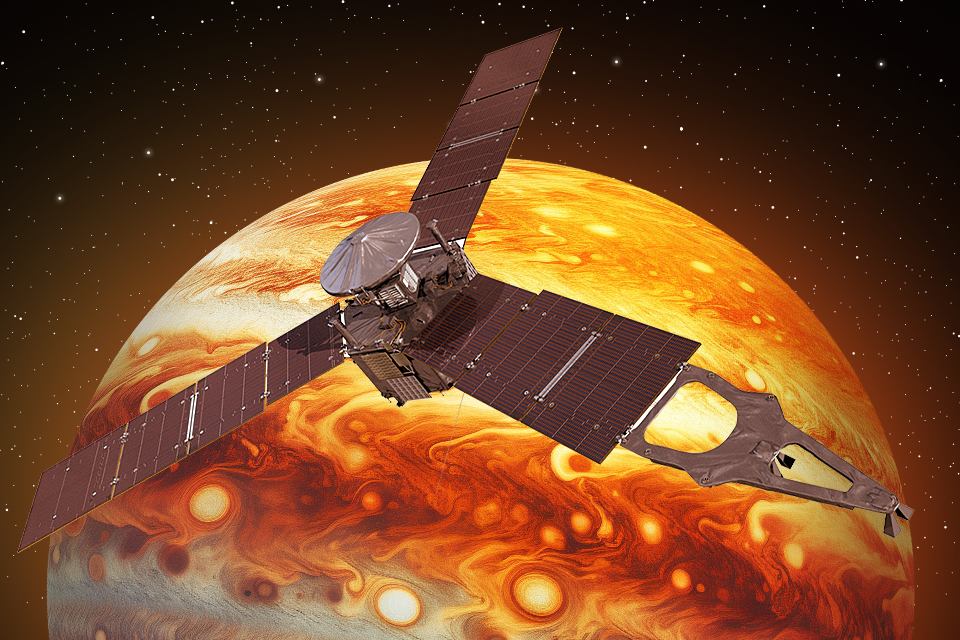NASA has published a new image transmitted to Earth by the Juno probe. It demonstrates Io— moon of Jupiter, on the surface of which there are hundreds of active volcanoes.

The visit to Io took place on February 3. Juno passed at a distance of only 1,500 km from the surface of Io. The image taken by the Earth messenger is interesting because we can see many details of the moon’s relief on its night side. This is explained by Jupiter. Sunlight reflected by the gas giant illuminated the dark side of Io.
Juno’s photo shows how much Io differs from other moons of Jupiter. There is no ice or noticeable impact craters on its surface. But there are numerous volcanoes, which eruptions continuously modify the landscape of the moon. The reason for this activity is the tidal interactions between Io and Jupiter, which literally “liquefy” the interior of the moon.
Due to the incessant eruptions, Io’s surface is a mixture of plains covered with volcanic deposits, numerous mountains, plateaus and gorges through which streams of molten sulfur float. There are also permanent lava lakes on the moon. So it is not surprising that some figuratively compare the conditions on the surface of Io with hell.
This was Juno’s last such close visit to Io. The spacecraft will use the gravity of the moon to reduce the period of its orbit around Jupiter to 33 days.

In the future, Juno will make several more flights of Io, but each time the distance will increase. Starting in April 2024, the spacecraft will begin a series of experiments during which it explores the upper layers of Jupiter’s atmosphere. This will provide key information about the shape and internal structure of the planet. The Juno mission is designed to operate until the end of 2025. At the moment, it is unknown whether NASA will renew it again.
Follow us on Twitter to get the most interesting space news in time
https://twitter.com/ust_magazi


